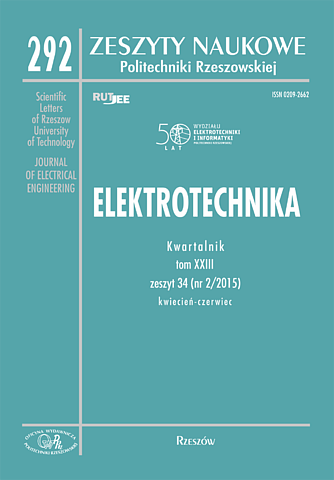Abstract
Network traffic analysis and the network devices working anomaly detection methods is an interesting problem for analysts researching computer networks. Proper interpretation of the anomalies and appropriate response to it can improve the quality of the network, to prevent a failure or shorten. The paper presents an original application created in the LabVIEW environment, with implemented algorithms to determine the Hurst coefficient, which is a measure of self-similarity and determine the long-range dependencies and multifractal traffic. The aim of the application was to implement known methods of determining the Hurst coefficient, e.g. the R/S statistics method, the absolute value method and the aggregate variance method, as a statistical apparatus to determine the characteristics of network traffic. The study used a virtual test network which model was created in the OPNET Modeler environment. Carried out in the application the statistical analysis indicated that the level of network traffic self-similarity is in the range from 0.5 to 1, and it’s value becomes higher with increasing fulfillment of the network bandwidth. Uninterrupted network traffic with a low intensity (e.g. VoIP traffic type) has a self-similarity comparable to the white noise equal to 0.5 which is presented in the article.
References
[2] A. J. Field, U. Harder, P. G. Harrison, Measurement and modeling of self-similar traffic in computer network, IEE Proc. Commun., Vol. 151, No. 4, August 2004.
[3] P. Garcia-Teodoro, J. Diaz-Verdejo, G. Macia-Fernandez, E. Vazquez, Anomalybased network intrusion detection: techniques, systems and challenges, Comput. Secur., 28, pp. 18–28, 2009.
[4] H.-D. Jeong, J.-S. Lee, D. McNickle, K. Pawlikowski, Self-similar properties of malicious teletraffic, Int. J. Comput. Syst. Sci. Eng., 28 (1), pp. 1–7, 2012.
[6] P. Dymora, M. Mazurek, D. Strzałka,: Computer network traffic analysis with the use of statistical self-similarity factor, Annales UMCS Informatica Vol.13 (2), 69–81, 2013.
[7] M. Mazurek, P. Dymora, Network anomaly detection based on the statistical selfsimilarity factor for HTTP protocol, Przegląd elektrotechniczny, ISSN 0033-2097, R. 90 NR 1/2014, s.127 - 130, 2014.
[8] P. Dymora, M. Mazurek, K. Żelazny, Operating system efficiency evaluation on the base of measurements analysis with the use of non-extensive statistics elements, Annales UMCS, Informatica. Volume 14, Issue 3, Pages 65–75, ISSN (Online) 2083- 3628, 2014.
[9] P. Dymora, M. Mazurek, Network Anomaly Detection Based on the Statistical Self-similarity Factor, Analysis and Simulation of Electrical and Computer Systems Lecture Notes in Electrical Engineering Volume 324, Springer, pp 271-287, 2015.





